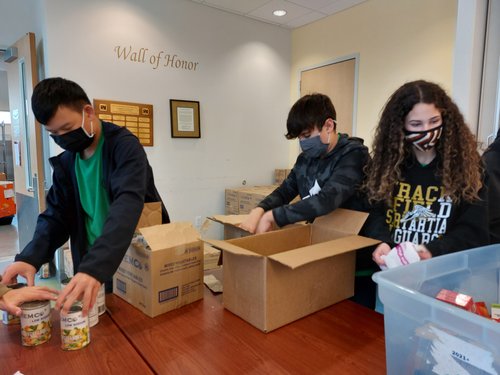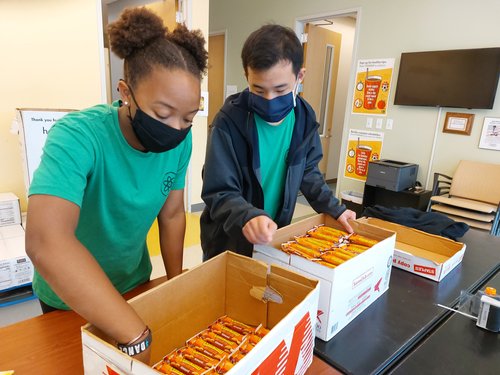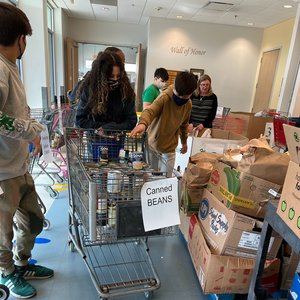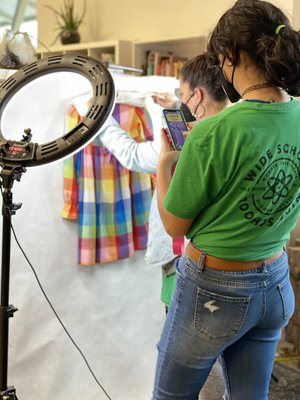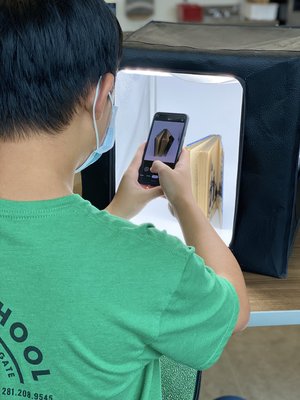WIDE Middle and High School
The WIDE School’s high school program is part of a Big Picture School. Many aspects are implemented in our Middle School.
Some important aspects of our high school model include internships, extending real world experiences and our high school students take dual credit college classes. Students have the opportunity to identify an interest or career path they would like to explore. WIDE then helps to find organizations, events, and general opportunities for the students to have real world experiences and work with experts in that field. The middle school years are spent helping to prepare the students for taking on more responsibilities and how they can self manage their time, resources and self advocate to ensure their success.
Big Picture Learning was established in 1995 with the sole mission of putting students directly at the center of their own learning. With an intention to demonstrate that schooling and education can and should be radically changed, Big Picture Learning was born.
In the schools that Big Picture Learning envisioned, students would be at the center their own education. They would spend considerable time in the community under the tutelage of mentors and they would not be evaluated solely on the basis of standardized tests. Instead, students would be assessed on exhibitions and demonstrations of achievement, on motivation, and on the habits of mind, hand, and heart – reflecting the real world evaluations and assessments that all of us face in our everyday lives.
Today, there over 65 Big Picture network schools in the United States and many more around the world; with schools in Australia, the Netherlands, Italy and Canada utilizing the Big Picture Learning design. Each individual school embodies the fundamental philosophy of Big Picture Learning: putting students at the center of their own learning.
Please visit their site to understand more: https://www.bigpicture.org/whoweare
BPL’s Student-Centered Learning Model
Each student at a Big Picture Learning school is part of a small learning community of 15 students called an advisory.
Each advisory is supported and led by an advisor, a teacher that works closely with the group of students and forms personalized relationships with each advisee.
Each student works closely with his or her advisor to identify interests and personalize learning.
The student as the center of learning truly engages and challenges the student, and makes learning authentic and relevant.
Each student has an internship where he or she works closely with a mentor, learning in a real world setting.
Parents and families are actively involved in the learning process, helping to shape the student’s learning plan and are enrolled as resources to the school community.
The result is a student-centered learning design, where students are actively invested in their learning and are challenged to pursue their interests by a supportive community of educators, professionals, and family members.
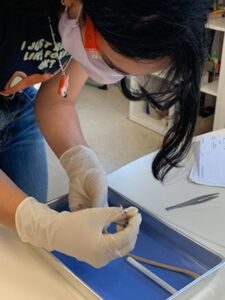
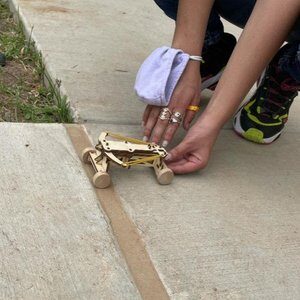
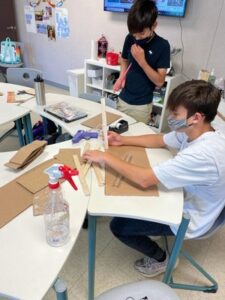
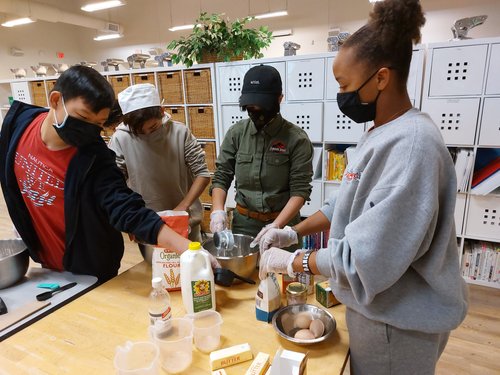
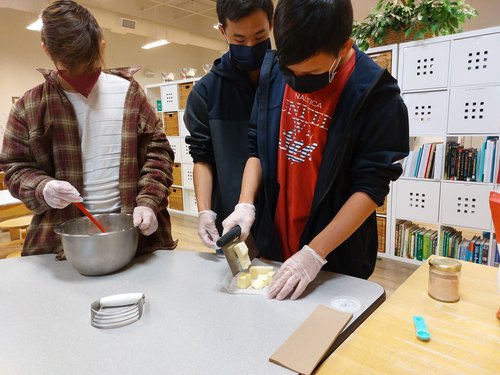
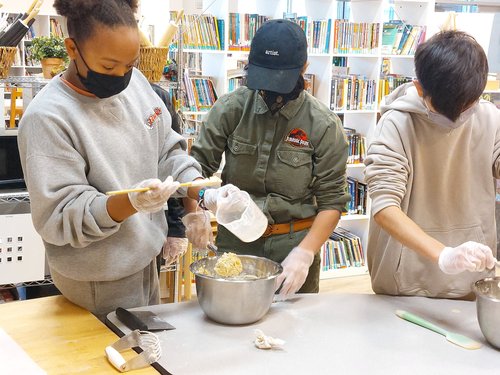
10 Distinguishers of the BPL Personalized Learning Method
Big Picture Learning schools exist throughout the country and the world. They are in rural environments and urban environments. They serve both large and small populations of students. Some Big Picture schools exist in gleaming new buildings, while some can be found in retrofitted structures which haven’t been in use for some time. In short, Big Picture schools (like the students they serve) often look dramatically different than one another. Each is its own unique environment where students can flourish as individuals within a community of learners. However, there are many elements within our learning design that are uncommon and distinct, which pull our network together and distinguish them from most other schools.
ONE STUDENT AT A TIME – The entire learning experience is personalized to each student’s interests, talents and needs. Personalization expands beyond mere academic work and involves looking at each student holistically.
ADVISORY STRUCTURE – Advisory is the core organizational and relational structure of a Big Picture Learning school, its heart and soul, often described as a “second family” by students. Students stay with an advisor and a group of fellow classmates for four years, building close personal relationships that last a lifetime.
LEARNING THROUGH INTERESTS AND INTERNSHIPS (LTIs) – Real world learning is best accomplished in the real world. Big Picture students intern–often twice a week for an entire school day–with experts in their field of interest, completing authentic projects and gaining experience and exposure to how their interests intersect with the real world.
PARENT AND FAMILY ENGAGEMENT – Parents are welcome and valued members of the school community and play a proactive role in their children’s learning, collaborating in the planning and assessment of student work. They use their assets to support the work of the school, and often play an integral role in building relationships with potential LTI mentors.
SCHOOL CULTURE – In Big Picture schools, there is palpable trust, respect and equality between and among students and adults. Students take leadership roles in the school, and teamwork defines the adult culture. Student voice is valued in the school decision making process and visitors are struck by the ease with which students interact with adults.
AUTHENTIC ASSESSMENT – Students are assessed not by tests, but by public displays of learning that track growth and progress in the student’s area of interest. Assessment criteria are individualized to the student and the real world standards of a project. Students present multiple exhibitions each year and discuss their learning growth with staff, parents, peers, and mentors.
SCHOOL ORGANIZATION – Schools are organized around a culture of collaboration and communication. They are not bound by the structures of buildings, schedules, bells, or calendars. There is an interdependence between school and community.
LEADERSHIP – Leadership is shared and spread between a strong, visionary principal; a dedicated, responsible team of advisors and other staff; and students. The community functions as a democracy. A pervasive sense of shared ownership drives a positive culture dedicated to ongoing improvement.
POST-SECONDARY PLANNING – Students develop plans that contribute to their future success–be it through college, trades, schools, travel, the military, or the workforce.
PROFESSIONAL DEVELOPMENT – Regular advisor PD is conducted at each school by principals, other school staff, and BPL staff and coaches. A Big Picture School is a community of lifelong learners who embrace continuous improvement.

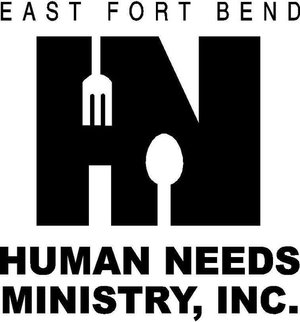
High school students have committed to volunteering at a local food pantry, East Fort Bend Food Pantry located in Stafford, for their first internship of the year. The pantry provides food to almost 200 local families weekly. It was through this volunteer experience we became aware of a need within the organization. The Tri City Church Resale Shop provides all of the proceeds of their sales to the food bank. Because of COVID the resale shop lost about $15,000 in expected sales. The resale shop had to think creatively on how to reach customers that could no longer come to the shop in person. The solution was for the store to go online.

Through Etsy, the resale shop sells vintage and rare items that have been donated to them. The high school students have worked this week to understand how to appraise and value vintage and hard to find items. We discussed marketing and how to photograph items in order to post to the site. The objective was having a clean and cohesive background for all the items. We worked with Mr. Dandee to understand the basics of photography. We learned how to build a light box and an infinity background.

